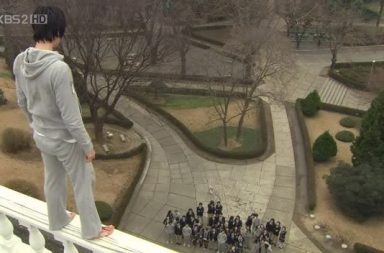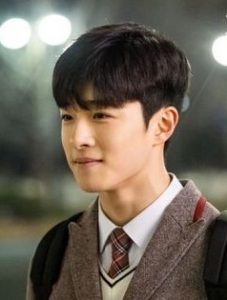
Note: this article contains discussions of bullying and violence, and references to suicide.
School violence and bullying is a serious issue in South Korea. In 2015, it was estimated that 3 out of 10 students experience bullying in school. It is hardly surprising then, that high school dramas often depict scenes of bullying and/or violence. The recently concluded A Beautiful World is a rare drama that not only depicted such scenes but made the issue its central plot.
A video of Park Seon-ho being beaten by his “friends” emerges a few days after he is found to have fallen off his school’s roof. Despite the video and Seon-ho’s critical condition, the School Violence Committee lets his assailants go with a simple punishment. As the school administration and law enforcement fail them, Seon-ho’s loving family take it upon themselves to investigate into what happened on the night he fell.
In A Beautiful World, Seon-ho not only survives the fall, but he has no lasting injuries. Unfortunately, such happy endings are the stuff of dramas. Real life is not as forgiving. Drama writers thus find much inspiration to draw upon from real life. Perhaps that is why dramas that delve into this heavy subject share many plot points.
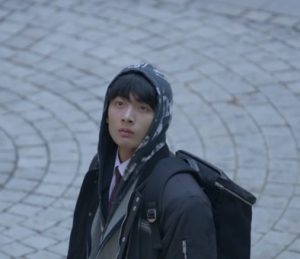
In Solomon’s Perjury (2016), the Korean remake of the Japanese movie of the same name, student Lee So-woo is found dead on the school grounds one winter morning. Once again, in their rush to close the unsightly incident, school administration and law enforcement fail to uncover what happened. A few students take it into their own hands to organize a “trial” and expose the truth.
In both dramas mentioned above, a student from a middle class or poor family, previously known to have been bullied by children of the wealthy and influential, has fallen off the school roof. It is unknown whether he fell accidentally, whether he jumped deliberately, or whether it was something much more sinister — a murder. The elite school where the student studied wants to resolve the matter quietly and his bullies are given no more than a warning or minor punishment, if at all. The police shrug off the case. Thus, family and friends take matters into their own hands, and a drama is born.
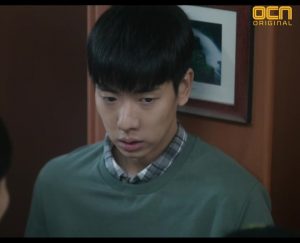
Even dramas that do not necessarily focus on the issue feature these elements. In Save Me (2017), another heavy drama that takes on the topic of a religious cult, the cult in question uses a family tragedy – the death by suicide of the son as he was being bullied – to entice the family into its fold. Here, the show does not raise the question of what happened to the boy. Instead, we are shown in brutal detail how he was assaulted, and why he jumped from the school roof.
These commonalities reflect real life tragedies. It is striking that in A Beautiful World, the bullies when questioned, repeatedly say they could never have imagined that the things they did “for fun” would drive Seon-ho to such an extreme step. This mirrors the reported words of the real-life bullies of Kwon Seung-min, whose death by suicide in 2011 brought the issue into national public consciousness. A quick google search will also reveal instances of adolescent death by suicide, prompted by bullying. Often in such real-life instances, the student in question has jumped off their apartment building, echoing Kwon’s own death. This raises the question as to what measures South Korean authorities have taken to curb such instances. As drama viewers, what hints can we glean about the effectiveness of these measures?
The law takes two separate but concurrent approaches to school violence and bullying. First, there is criminal law, with its appropriate measures to tackle juvenile delinquency. There is plenty of debate concerning the approach juvenile justice should take against those accused of crimes. Many argue the current law is too easy on delinquents. This is briefly referenced in A Beautiful World, when the influential father of the student leading Seon-ho’s bullies assures him that even if he is caught, the law will let him off as he is still underage.
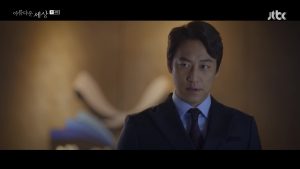
Second, there is the Act On The Prevention Of And Countermeasures Against Violence In Schools, enacted in 2004, which specifically deals with how schools are to handle the issue. The definitions of “school violence” and “bullying” are wide, and cover “cyber-bullying”. As a preventive measure, the State is allowed to integrate and control CCTVs installed in schools, and schools are to make provision for the services of a counselor. Dramas show how easily CCTVs are side-stepped as bullying occurs in places such as bathrooms where cameras are absent. For better or worse, they aren’t present on dramaland school roofs either (or have been tampered with). Counselors only show up to do too little too late.
Most significantly, the Act requires all schools to set up an “Autonomous Committee” to deliberate on matters related to school violence. This is the School Violence Committee, composed largely of representatives of parents, that features significantly in dramas. Among other things, it is empowered to take measures necessary for the protection of the victim including making provisions for psychological counselling or advice. It may also decide on a punishment for the “aggressor student” — which ranges from a written apology to service to the school (as done in A Beautiful World) to receiving psychological counselling to suspension or transfer to another school or expulsion.
Despite the above provisions, the Act provides only vague guidance as to how the Committee is to examine and weigh evidence. It thus leaves much room for discretion on the Committee’s part.
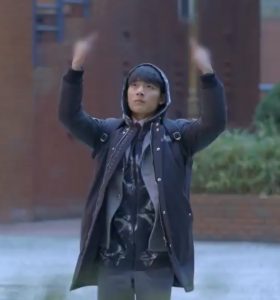
Pertinently, there is no safeguard against the Committee’s own bias, a loophole dramas never fail to capitalize upon. Dramaland schools have an incentive to downplay the incident. Parents of the accused, and even adults more directly involved in the violence, are usually powerful forces in the Committee. Thus the ensuing exercise is little more than a farce. This is seen most clearly in Solomon’s Perjury, when students discussing a previous case observe that the victim was made out to be the assailant and expelled. So-woo doesn’t believe in the Committee either, and refuses to attend the hearing. Similarly, in A Beautiful World, Oh Joon-suk, the instigator of the violence, is let off after he successfully fakes his emotions.
Moreover, students have a mere 15 days to appeal against the decision of the Committee — perhaps this short period is why dramaland students never file an appeal.
With the failure of law enforcement and school administration to effectively tackle the issue, dramas turn to family and friends to carry forward the torch of justice. In doing so, dramas are telling us that ultimately, it is the people around us that play the largest role in the prevention of, or recovery from the scars of, such incidents.
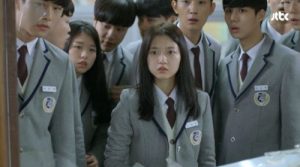
Most strikingly, children are shown to mimic the behavior of the adults around them. In Solomon’s Perjury, we see that So-woo’s death was enabled by the failing system, and by adults who should have protected him when he needed their protection the most. The strong-willed and courageous Go Seo-yeon, driven by a strong sense of justice, pushes ahead with the trial despite all opposition from the school. It is shown that she is able to do so because she has the support of her equally fair and principled parents.
On the other hand, Han Ji-hoon joins her while hiding a dark secret, much like his father. The similarities to one’s parents are even more pronounced in A Beautiful World, where five different sets of parents — those of four bullies, and Seon-ho and his sister — react to the tragedy in different ways, all of which are closely replicated by their children.
Whether because of the need to fill in the hours, or to construct complex characters, dramas show us that bullies too come from troubled (albeit wealthy) homes. In Solomon’s Perjury and A Beautiful World, the two main bullies are both troubled enough to, at some point in the drama, contemplate suicide themselves. In a heartfelt scene in A Beautiful World, as Joon-suk stands on the edge of a roof gathering his resolve, Seon-ho’s father finds him and assures him that all will be okay. With this narrative in mind, the dramas are telling us that bullies too can be saved — with the right guidance from the adults surrounding them.
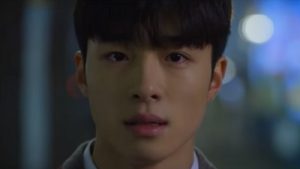
Most poignantly, dramas are also assuring victims that all is not over. This is not only implied in the seemingly improbable happy endings, where everything is ok at the end, it is sometimes explicit. When Seon-ho encourages another student, he tells her that (in Korean) “suicide” spelled backwards is “live”. Therefore,
Don’t lose. You must not lose.
Notably, we are not shown the other student as he speaks, and Seon-ho looks directly into the camera, speaking to the audience.
Watching these dramas, it is interesting to break down themes that may influence our own perspectives on social issues. There are two schools of thought regarding juvenile justice. If one sees the bully in isolation, as a gangster-in-the-making, one is more likely to advocate harsh punishment and deterrence, whereas if one sees the bully as a product of his/her environment — family and school — then one will advocate for reform and rehabilitation.
The sympathetic portrayal of student bullies in recent drama shows that South Korean drama writers do not view them in isolation. I personally support reform and rehabilitation as well, but this is easier said than done. Horrific real-life incidents on the news remind us that despite everything dramas do to build a complex and dynamic character for the bully, real life is perhaps even more complex and dynamic, and the true brutality of what victims may suffer is not easily captured in a drama.
If you or anyone you know is experiencing distress, a list of helpline numbers from around the world can be found here: www.iasp.info/resources/Crisis_Centres/
(CNN, Int’l Journal of Justice and Law, Korea Expose, Medium, PMC, ResearchGate. Images via JTBC, OCN. Translated Act via Korea Legislation Research Institute)


